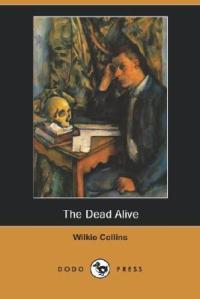 As a young guide for Sunshine Tours, Armino Fabbio leads a pleasant, if humdrum life — until he becomes circumstantially involved in the murder of an old peasant woman in Rome. The woman, he gradually comes to realise, was his family’s beloved servant many years ago, in his native town of Ruffano. He returns to his birthplace, and once there, finds it is haunted by the phantom of his brother, Aldo, shot down in flames in ’43.
As a young guide for Sunshine Tours, Armino Fabbio leads a pleasant, if humdrum life — until he becomes circumstantially involved in the murder of an old peasant woman in Rome. The woman, he gradually comes to realise, was his family’s beloved servant many years ago, in his native town of Ruffano. He returns to his birthplace, and once there, finds it is haunted by the phantom of his brother, Aldo, shot down in flames in ’43.
Over five hundred years before, the sinister Duke Claudio, known as The Falcon, lived his twisted, brutal life, preying on the people of Ruffano. But now it is the twentieth century, and the town seems to have forgotten its violent history. But have things really changed? The parallels between the past and present become ever more evident
I read this years ago, had a vague remembrance about it, but my review at the time was appalling. I had a newer copy on the shelf so decided it was time to bite the bullet and read it again.
It starts with Armino working in Rome with his Anglo and American tour group, and through various means, ends up leaving a 10,000 lire note on the body of a drunken woman lying on the steps of the local church. The following morning he finds out that the woman has been murdered, the large note having disappeared and that he did in fact know the woman as someone who had worked for his family 20 years before. Armino returns to his home town – ditching his tour group and his company – to find out more. Times have moved on, and there are few people who remember him as an 11 year old, who was driven off one day by his mother and her lover, the Nazi German Commandant (his father having died several years previously).
Armino gets pulled into the organisation of a local Festival that, to his shock, is being organised by his older brother Aldo, who he had believed killed in action during the war. The Festival is to celebrate the life and influence of Duke Claudio. There are mixed views on Claudio, with most people thinking him rather mad and brutal. Some people think he flew off a tall building (being the Flight of the Falcon), others thinking he drove 18 horse chariot through the town, massacring loads of the local population. Aldo is the driving force behind the festival, believing that Claudio is misunderstood and should be celebrated. Armino has always remembered the older Aldo being a dominating personality even when younger, so his personality hasn’t changed much since the family split during the war (although Aldo has a different view of his mother after she took up with various men in the years after her first husband’s death).
In the following days some shocking events happen, ultimately resulting in public humiliation for certain individuals, all with a backdrop of the students getting rebellious in the lead up to the Festival. Meanwhile Armino is trying to reestablish a relationship with his brother having been apart for 20 years, and both believing the other was dead for so long.
The book leads up to the Festival when, refusing Aldo’s command to get out of town, Armino ends up taking part in the rarely performed 18 horse chariot ride through the town (which previously resulted in the deaths of thousands). This is part of an exciting but ultimately tragic ending. Both Aldo and Armino learn the meaning of family, and confront some horrible truths from the past.
Parallels can be drawn with what went on in the country during World War Two – it’s the new C and E students (the ones who have brought the money into the town) against the old Arts faculty (who havent the money and are rather living in the past) and the youth and vigour of the first is rebelling against the old staid latter with a certain level of armed violence.







